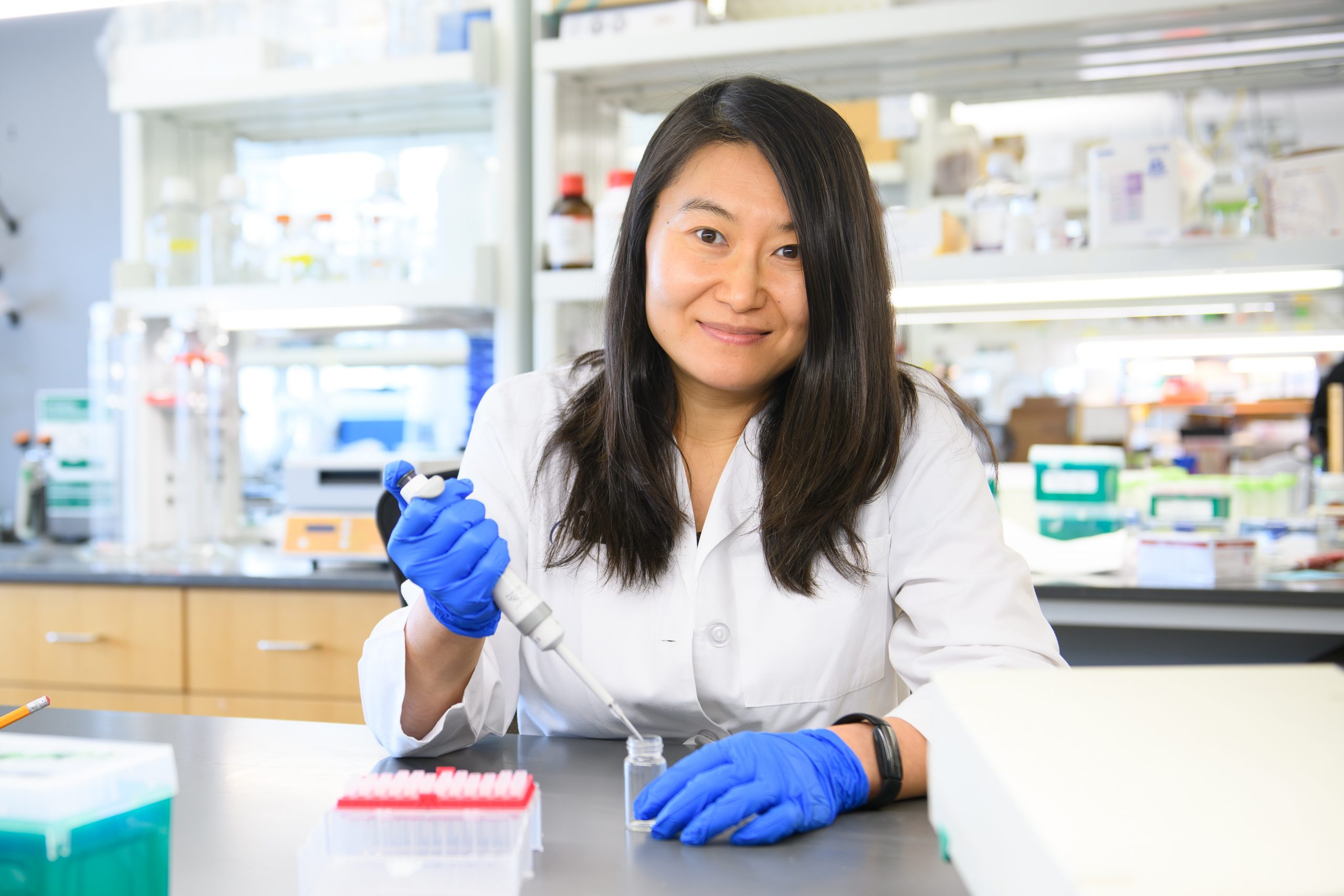Xin Geng, Ph.D.
Research Assistant Professor
Cardiovascular Biology Research Program
Research
Lymphatic vessels run throughout the body along with the blood vessels. The system removes excess fluid from interstitial space, absorbs dietary fat and regulates cholesterol metabolism, and transports immune cells to monitor for infection. Consequently, abnormalities in the system result in lymphedema and contribute to diseases such as inflammatory and metabolic disorders, cardiovascular diseases and cancer growth.
Lymph is the liquid made up of the fluid, large molecules and cells picked up by the lymphatic system. Lymph is drained through the lymphatic collectors, filtered through lymph nodes and finally dumped back to the blood circulation. The one-way flow is guarded by valves throughout the process. Defects in any of these valves or vessels can result in lymphatic malfunction and contributes to the progression of various diseases. These defects can be caused by genetic factors, physical trauma, and biochemical or biomechanical cues.
Studies of how the lymphatic system grows and functions in healthy and disease conditions will uncover the molecules essential for the proper function of lymphatics. This research could lead to understanding how to promote proper function or inhibit unwanted lymphatic growth to stop or reverse disease progression.
My current focus of study is how biomechanical forces regulate the growth of lymphatic vessels and lymphatic valves. The long-term goal of my research is to restore the proper function of lymphatic vessels in lymphedema patients and inhibit lymphatic growth in diseases such as cancer metastasis.
Publications
Geng X, Ho Y, Srinivasan RS (2021). Mechanical and biochemical signals in lymphatic vascular development. Cellular and Molecular Life Sciences. Aug; 78(16): 5903-5923.
Geng X, Yanagida K, Akwii RG, Choi D, Chen L, Ho Y, Cha B, Mahamud MR, de Ruiz KB, Ichise H, Chen H, Wythe J, Hong YK, Mikelis CM, Hla T, Srinivasan RS (2020). S1PR1 regulates the quiescence of lymphatic vessels by inhibiting laminar shear stress-dependent VEGF-C signaling. JCI Insight. (cover image), Jul 23;5(14):e137652.
Chen D*, Geng X*, Lapinski PE, Davis MJ, Srinivasan RS, King PD (2020). RASA1-driven cellular export of collagen IV is required for the development of lymphovenous and venous valves in mice. Development. (cover image), Dec 7;147(23):dev192351. (* Co-first authors)
Mahamud MR*, Geng X*, Ho YC, Cha B, Kim Y, Ma J, Chen L, Myers G, Camper S, Mustacich D, Witte M, Choi D, Hong YK, Chen H, Varshney G, Engel JD, Wang S, Kim TH, Lim KC, Srinivasan RS (2019). GATA2 controls lymphatic endothelial cell junctional integrity and lymphovenous valve morphogenesis through miR-126. Development. Nov 5;146(21):dev184218. (* Co-first authors)
Geng X, Srinivasan RS (2018). Correlative fluorescence and scanning electron microscopy to study lymphovenous valve development. Methods Mol Biol. 1846:85-96.
Geng X, Cha B, Mahamud MR, Lim KC, Silasi-Mansat R, Uddin MK, Miura N, Xia L, Simon AM, Engel JD, Chen H, Lupu F, Srinivasan RS. Multiple mouse models of primary lymphedema exhibit distinct defects in lymphovenous valve development. Dev Biol. (cover image) 2016 Jan 1;409(1):218-33.
Contact
Cardiovascular Biology Research Program, MS 45
Oklahoma Medical Research Foundation
825 N.E. 13th Street
Oklahoma City, OK 73104
Phone: 405-271-3056
E-mail: Xin-Geng@omrf.org



